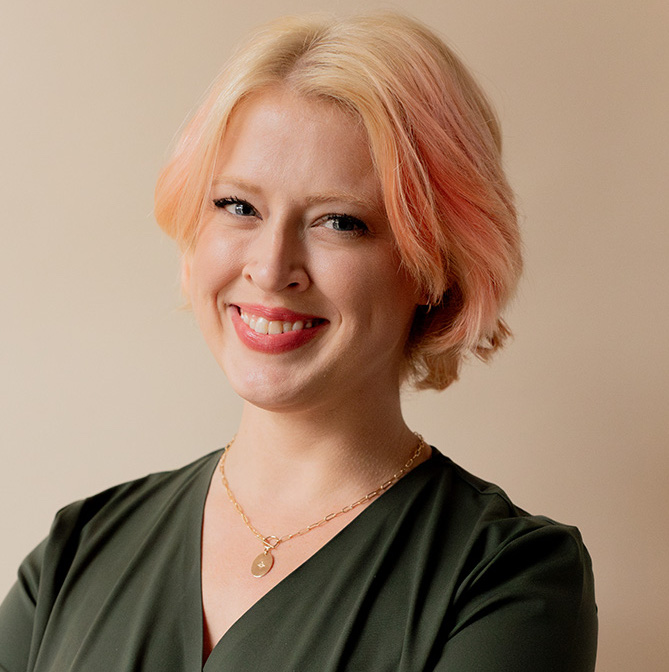
What Is A Third Place? (And Why You Should Have One)
What Is A Third Place? (And Why You Should Have One)
“What can I get you, darling?” The bartender said, sliding a paper coaster across the bar. Usually I would have rolled my eyes, but the endearing term caught me off guard. It’s been so long since someone called me darling, since someone made me feel like a darling. I ordered my drink and blinked away a tear.
There was something so comforting about that moment, handing over crinkled cash in exchange for being taken care of. I wasn’t at home or at work, but I wasn’t in a new location, either—I was in my “third place.”
A third place is a familiar public spot where you regularly connect with others known and unknown, over a shared interest or activity. The term was coined by Ray Oldenburg in the early 1990s, as increasing work hours and more heavily siloed communities (think: suburbs) became the norm. Because when you have access to everything you could possibly want or need at home (or online), leaving the house becomes optional.
“A third place is a familiar public spot where you regularly connect with others known and unknown, over a shared interest or activity.”
The pandemic in 2020 wiped out almost everyone’s third place—communal gathering places went from being community staples to being public health and safety concerns.
But a place outside of home and work, Oldenburg argued, is necessary for public wellbeing. “What suburbia cries for are the means for people to gather easily, inexpensively, regularly, and pleasurably,” said Oldenburg. “A ‘place on the corner,’ real life alternatives to television, easy escapes from the cabin fever of marriage and family life that do not necessitate getting into an automobile.”
Consider Central Perk from “Friends,” and Cheers from…well, “Cheers.” In high school, you could find me in the band room or the last-standing Borders bookstore in my hometown. Nowadays my third places are the small coworking space I rent less than a mile from my apartment, and the local brewery the same distance in the opposite direction. On days when I can muster getting out of the house, these spaces become a balm—talking to people, it turns out, fulfills a different type of social need than conversations with your pets. (Note I said “different”, not better 🤪).
These third places often catch us at our best—we’re not burdened by the immediate urgencies of work or the piles of laundry left to fold. They also offer up a safe place for us to show up at our worst when we need to, when we’re stressed or feeling worn down. Our only obligation is to show up, engage, and metaphorically kick our feet up with our friends and community—or alone if it’s solitude we’re after. Sounds nice, right?
“What suburbia cries for are the means for people to gather easily, inexpensively, regularly, and pleasurably—a ‘place on the corner’.”
Ray Oldenburg
But third places can feel like a relic from the “before times,” when we used to share drinks and scooch close together on dilapidated couches the color of coffee. They’re also more easily accessible, in my experience, when you live in a city. As Oldenburg noted, they become much more valuable when they don’t require a vehicle to access; meaning these spaces become more limited to only the people who have the time, money, and transportation to access them. The rest and relaxation these public spaces offer have now become gated—and that’s not good for any of us.
People Need Third Places
As the news looms larger and larger, we all feel a bit smaller every day. But third places shrink our world down to fit us; there, we are recognized by others in a world that often does not recognize how soft and tender we each are. These community spaces are fundamental supporters of our psychological wellbeing, as was researched in California students in 2022.
We also gain a sense of psychological ownership, meaning we feel a sense of influence and identity, when we find a third place that matches our needs. A study of these types of public places written in 2019 (pre-pandemic!) outlines some of the strongest characteristics of third places. Impactful third places allow for customer and community self expression, support concentration, and allow for active participation in the space—all that reinforce the individual as part of community that we all need these days.
“Having a third place, where someone knows my name or recognizes my face, keeps me connected…sharing a kind word with a stranger reminds me to stay empathetic.”
Having a third place, where someone knows my name or recognizes my face, keeps me connected. It’s so easy to shut off, to feel alone in the face of everything, but sharing a kind word with a stranger reminds me to stay empathetic. Third places invite me to open myself up to external experiences, and ask me to examine my values and how I hold them in the presence of strangers.
Third places aren’t just for extroverts, either (lord knows I’m an introvert). These locations can offer us a space to be by ourselves and read or write, while still having someone remember our drink order or compliment our haircut. It’s where we can find solitude without loneliness.
And Communities Need Them, Too
Third places are not just good for us as individuals; they add vibrancy to our communities, too. These locations are like the telephone poles covered in posters for shows, sales, and lost pets; we go to them to learn about what’s happening in our neighborhood. These are the people we vote, shop, and even protest with when it comes to significant community events.
Even back into the 18th century (and before), communities gathered in coffeehouses to exchange information and news. Cafes were dubbed “penny universities” for how they allowed experts and novices alike to share ideas and learn from one another for the price of a cup of coffee. Your rank, status, or literacy level did not matter in these spaces—third places can be a level playing field for all who enter.
The best kind of third place is accessible and is one that invites us into close proximity with people we may not meet otherwise. These days, third places look like a bar or cafe with an affordable happy hour, but they can also look like community meeting spaces, churches, or libraries. Particularly, these locations can be especially important for seniors and for anyone living in areas facing economic hardship. By breaking down social siloes, third spaces put people in touch.
How To Find Your Own Third Place
Third places are the nutrients of a thriving community, but COVID depleted and deprived us of so many of these spaces. Here are a few starting points as we continue to emerge from isolation.
- Libraries
- Coffee shops
- Book clubs
- The gym or yoga studio
- Alcoholic’s Anonymous or other recovery support group
- Bars or pubs
- Playgrounds (if you have kids—or are one)
- A friend’s yard or patio
- A dog park
- Recreation centers (pools, driving ranges, batting cages, etc)
- Community cleanup groups
- Group therapy
- A nature reserve or state park
- Women’s or youth shelters
- Volunteer spaces
- Areas with free Wi-Fi (like these spaces in Los Angeles)
- Privately owned public spaces (aka POPS, like these in New York)
The key is to find somewhere you feel welcome. Your third place should come with a sense of ease and offer respite from the world without removing you from it altogether. And for times that it cannot offer respite, maybe it can offer you a friendly conversation, a warm beverage, or a quiet space to sort out your thoughts.
Importantly, too, is the rise of digital third places for folks who live remotely, are disabled, or immunocompromised and cannot meet up in person. I’ve found community in online games like “No Man’s Sky” and “Fallout 76.” You can find community on Reddit, group text chains with your college buddies, or Instagram chats with like-minded people. These places are perfect for when we cannot embrace in person, but they’re also essential and valid for people who cannot afford or access many of the third places I listed above.
“Your third place should come with a sense of ease and offer respite from the world without removing you from it altogether.”
These days, I’m taking advantage of the precious moments I have to be in a shared space once again and cherishing those small glimpses of kindness from strangers. Strangers whose countenances gradually morph into the familiar face of a friend.
And I’m sure, when I can, to tip generously or clean up after myself to honor the people who help upkeep my sacred third place. Third places are not a place of taking, after all—they are a place of sharing.
Emily McGowan is the Editorial Director at The Good Trade. She studied Creative Writing and Business at Indiana University, and has over ten years of experience as a writer and editor in sustainability and lifestyle spaces. Since 2017, she’s been discovering and reviewing the top sustainable home, fashion, beauty, and wellness products so readers can make their most informed decisions. Her editorial work has been recognized by major publications like The New York Times and BBC Worklife. You can usually find her in her colorful Los Angeles apartment journaling, caring for her rabbits and cat, or gaming. Say hi on Instagram!
